Maria Medrano
MB-DECTNet: A Model-Based Unrolled Network for Accurate 3D DECT Reconstruction
Feb 01, 2023Abstract:Numerous dual-energy CT (DECT) techniques have been developed in the past few decades. Dual-energy CT (DECT) statistical iterative reconstruction (SIR) has demonstrated its potential for reducing noise and increasing accuracy. Our lab proposed a joint statistical DECT algorithm for stopping power estimation and showed that it outperforms competing image-based material-decomposition methods. However, due to its slow convergence and the high computational cost of projections, the elapsed time of 3D DECT SIR is often not clinically acceptable. Therefore, to improve its convergence, we have embedded DECT SIR into a deep learning model-based unrolled network for 3D DECT reconstruction (MB-DECTNet) that can be trained in an end-to-end fashion. This deep learning-based method is trained to learn the shortcuts between the initial conditions and the stationary points of iterative algorithms while preserving the unbiased estimation property of model-based algorithms. MB-DECTNet is formed by stacking multiple update blocks, each of which consists of a data consistency layer (DC) and a spatial mixer layer, where the spatial mixer layer is the shrunken U-Net, and the DC layer is a one-step update of an arbitrary traditional iterative method. Although the proposed network can be combined with numerous iterative DECT algorithms, we demonstrate its performance with the dual-energy alternating minimization (DEAM). The qualitative result shows that MB-DECTNet with DEAM significantly reduces noise while increasing the resolution of the test image. The quantitative result shows that MB-DECTNet has the potential to estimate attenuation coefficients accurately as traditional statistical algorithms but with a much lower computational cost.
A Metal Artifact Reduction Scheme For Accurate Iterative Dual-Energy CT Algorithms
Jan 31, 2022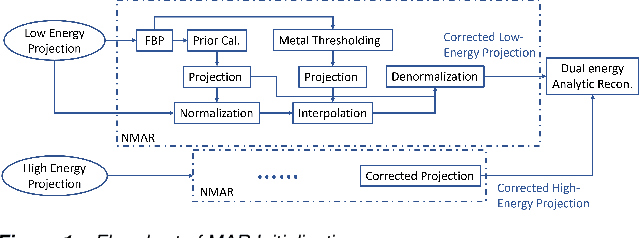

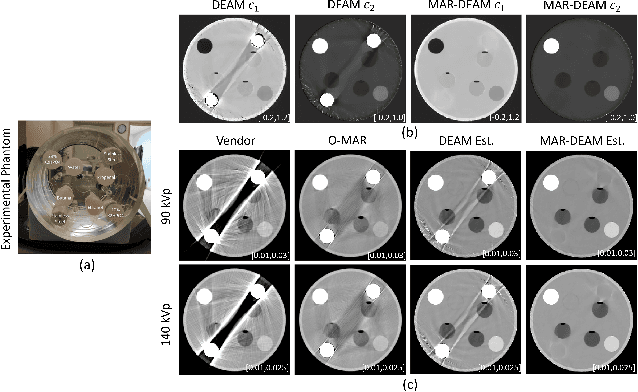
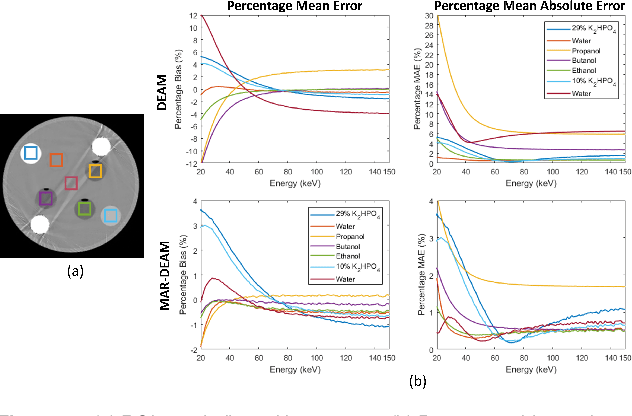
Abstract:CT images have been used to generate radiation therapy treatment plans for more than two decades. Dual-energy CT (DECT) has shown high accuracy in estimating electronic density or proton stopping-power maps used in treatment planning. However, the presence of metal implants introduces severe streaking artifacts in the reconstructed images, affecting the diagnostic accuracy and treatment performance. In order to reduce the metal artifacts in DECT, we introduce a metal-artifact reduction scheme for iterative DECT algorithms. An estimate is substituted for the corrupt data in each iteration. We utilize normalized metal-artifact reduction (NMAR) composed with image-domain decomposition to initialize the algorithm and speed up the convergence. A fully 3D joint statistical DECT algorithm, dual-energy alternating minimization (DEAM), with the proposed scheme is tested on experimental and clinical helical data acquired on a Philips Brilliance Big Bore scanner. We compared DEAM with the proposed method to the original DEAM and vendor reconstructions with and without metal-artifact reduction for orthopedic implants (O-MAR). The visualization and quantitative analysis show that DEAM with the proposed method has the best performance in reducing streaking artifacts caused by metallic objects.
A Machine-learning Based Initialization for Joint Statistical Iterative Dual-energy CT with Application to Proton Therapy
Jul 30, 2021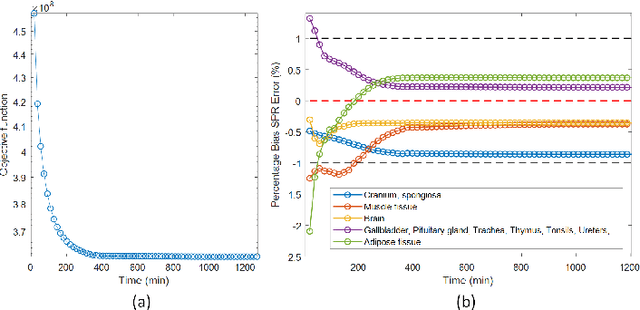
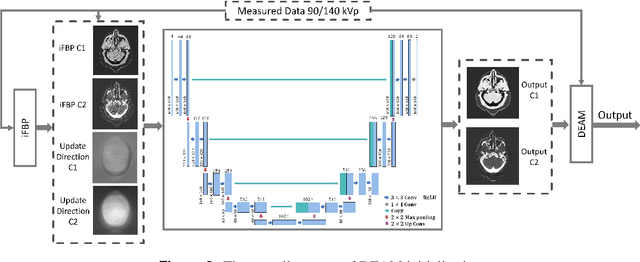

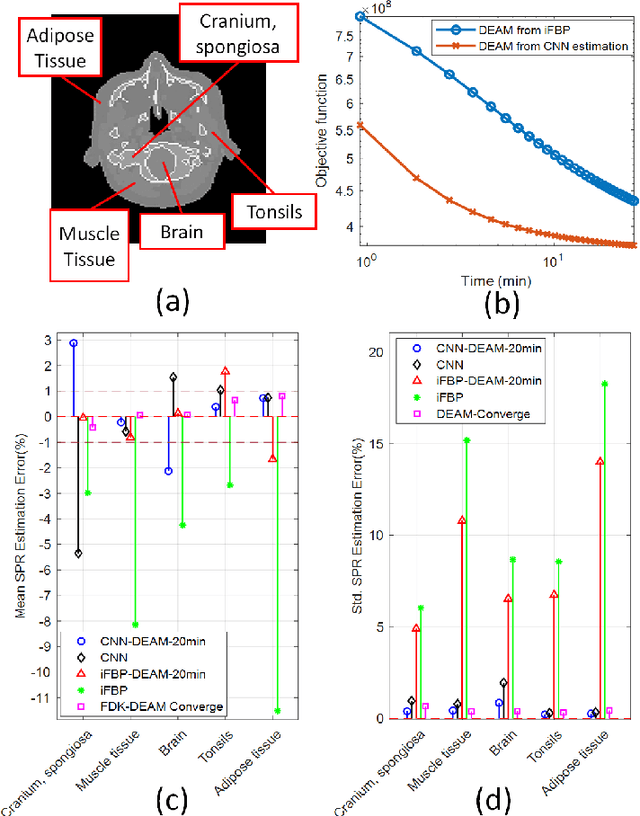
Abstract:Dual-energy CT (DECT) has been widely investigated to generate more informative and more accurate images in the past decades. For example, Dual-Energy Alternating Minimization (DEAM) algorithm achieves sub-percentage uncertainty in estimating proton stopping-power mappings from experimental 3-mm collimated phantom data. However, elapsed time of iterative DECT algorithms is not clinically acceptable, due to their low convergence rate and the tremendous geometry of modern helical CT scanners. A CNN-based initialization method is introduced to reduce the computational time of iterative DECT algorithms. DEAM is used as an example of iterative DECT algorithms in this work. The simulation results show that our method generates denoised images with greatly improved estimation accuracy for adipose, tonsils, and muscle tissue. Also, it reduces elapsed time by approximately 5-fold for DEAM to reach the same objective function value for both simulated and real data.
 Add to Chrome
Add to Chrome Add to Firefox
Add to Firefox Add to Edge
Add to Edge